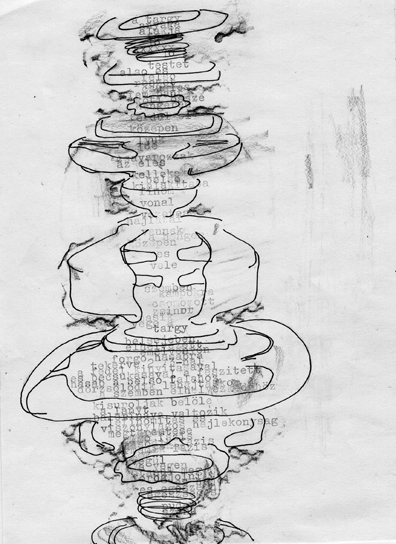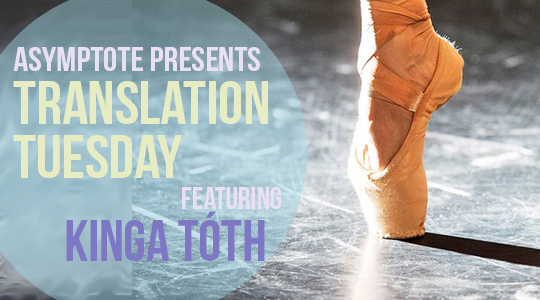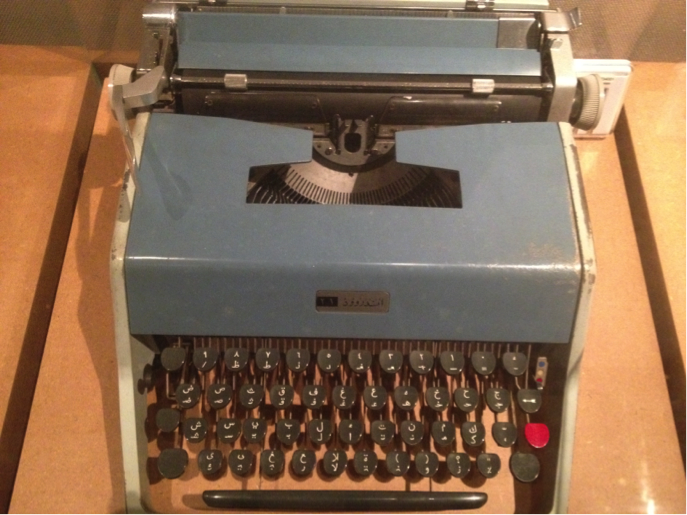“BALLERINA” is a poem from Hungarian writer Kinga Tóth’s book, ALL MACHINE. Tóth is not only a poet, but a visual and multimedia artist, some of whose visual work was featured in the Summer 2016 issue of Asymptote. The sound poetry Tóth produced for ALL MACHINE can serve as a fitting prelude (or accompaniment) to reading “BALLERINA.” We hear a whirring, disjointed medley of voices surrounded by the squeaking of an unoiled machine, much like the rotating figure in the music box of the poem.
Also included here are some illustrations from ALL MACHINE and photos from Tóth’s live work. Of them, Eva Heisler has written, “While the typed phrases in Tóth’s visual poems are a mix of English, German, and Hungarian, the poet insists that translation is not necessary, that legibility is not the point; words in her poem-drawings shake their signifying function and border on visual stammers, the line spacing often squeezed, the lines tightly stacked, and the pages factory-tuned.”

1
the object’s shape material
regular 10×10 wood
top and bottom parts
joined with metal hinges
rotating a cylinder
in the centre a hole where
sharp fixings
are screwed
its internal design
delicately lineated
including curves
in the centre of the cylinder
(and opposite too)
is wire knotted
to hooks inside the object
the other end
positioned on a platform
onto a turning rod
wound to 2/3
with the opening and
closing of the lid the taut
rod scrapes against
the object’s inner wall/border
upon lowering against
the opposite the aim
of the first phase is to scour
the girl out from within


